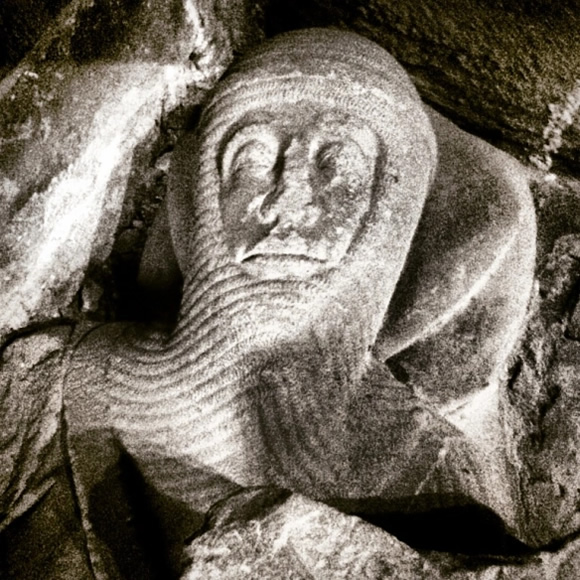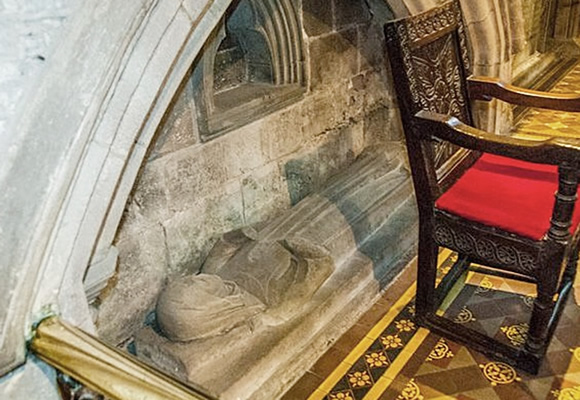Sir Grimbald Pauncefote: Knight, Lord, and Crusader
The narrative of Crickhowell Castle (Castell Crucywel), now a Grade I listed ruin, intertwines closely with the Turberville lineage, especially Robert Turberville’s seminal contributions. This account aims to distill the essence of his legacy and the castle’s historical journey.
Foundational Beginnings and Military Pursuits
Hailing from the distinguished Norman Turberville family, Robert Turberville played a crucial role in founding Crickhowell Castle circa 1121. As a vassal to Marcher lord Bernard de Neufmarché, Robert’s establishment of the castle represented a strategic effort to consolidate Norman dominance over the Welsh Marches, heralding a key moment in their Welsh expansion.
The Turberville Dynasty and Crickhowell Castle
The Turbervilles’ deep ties to Crickhowell Castle underline their lasting regional impact. Post the original motte and bailey construction by Robert Turberville, the family remained central to its safeguarding and governance, especially amid Welsh insurgencies. The 1172 rebellion led by Seisyllt ap Rhirid underscored the fortress’s strategic value and the Turbervilles’ staunch defense.
Strategic Positioning and Architectural Merit
Strategically perched near the River Usk, Crickhowell Castle’s siting was deliberately chosen for defense. The motte’s distinct oval shape and the shell keep’s remnants showcase the medieval architectural vision of Robert Turberville and his heirs. This era depicted the castle as both a martial bastion and a symbol of Norman rule.
Enduring Legacy and Historical Significance
Robert Turberville’s initiation of Crickhowell Castle’s construction has profoundly influenced Crickhowell and the Welsh Marches’ narrative. The Turbervilles’ stewardship over turbulent eras of Welsh dissent and their contributions to Norman administration form essential chapters in medieval Welsh history.
Architectural Enhancements under Sir Grimbald
With Sir Grimbald at the helm, the late 13th century saw Crickhowell Castle’s transformation into a formidable stone stronghold, reflecting the Pauncefote family’s ascending power and influence.
Valor and Sacrifice during the Crusades
The late 13th century’s Crusades, notably the Ninth Crusade in 1270, saw Sir Grimbald’s valor tested alongside Prince Edward. This era also birthed the legendary tale of Lady Sybil’s sacrifice, sending her hand as ransom for Sir Grimbald’s freedom from Saracen capture.
A Tribute of Faith and Gratitude
Following these tumultuous times, Lady Sybil commissioned St. Edmund’s Church in 1303, establishing the parish as a symbol of faith and resilience. This act transcended personal devotion, embodying a communal declaration of belief and persistence.
A Legacy Carved in Stone and Myth
Sir Grimbald and Lady Sybil’s effigies in St. Edmund’s Church stand as lasting tributes to their heritage. Despite the tombs’ undated inscriptions, historical records and folklore firmly embed them in Crickhowell’s chronicles. Sir Grimbald’s death in 1318 without heirs saw his brother, Sir Emerick, inherit, perpetuating the Pauncefote legacy.
St. Edmund’s Church Through Ages
St. Edmund’s Church has witnessed extensive modifications, adapting to the evolving spiritual and aesthetic demands of its parishioners. The aisle alterations in the 18th and 19th centuries reflect the dynamic interplay between the community and this sacred edifice, sparked by Lady Sybil’s initial efforts.
Reflections on an Eternal Legacy
The saga of Sir Grimbald Pauncefote and Lady Sybil, interwoven with themes of love, sacrifice, and architectural mastery amid medieval conflict and piety, leaves an indelible imprint on Crickhowell. Their story illuminates the intricacies of medieval life, the unyielding strength of faith, and the enduring essence of human devotion, providing a window into the past that continues to inspire and resonate.


